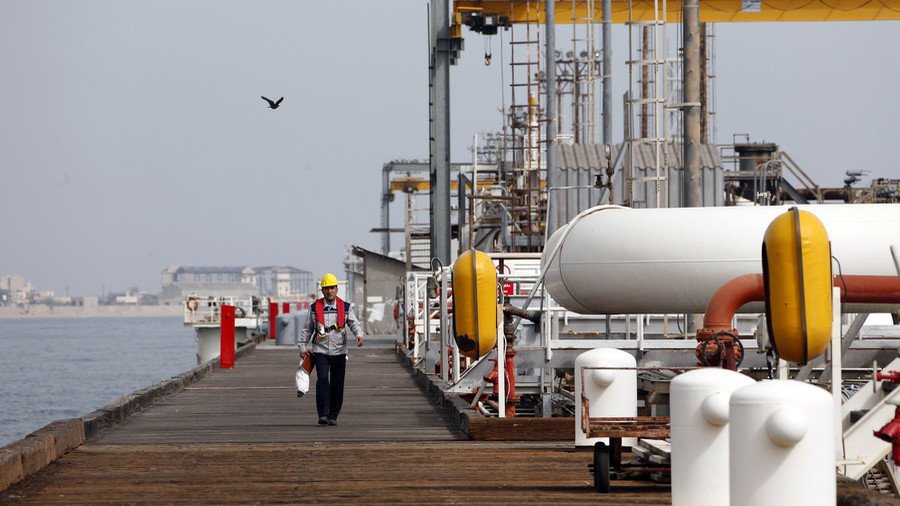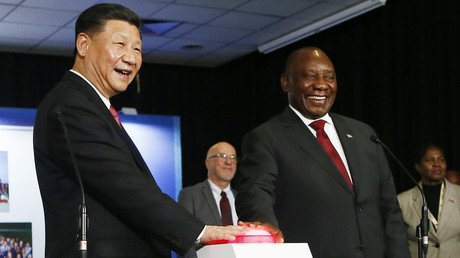Can US bring Iranian oil exports to zero?

The US wants Iran’s oil exports to drop to zero, according to a recent statement by National Security Advisor John Bolton. The question is: can the US pull it off?
The pressure has been on Iran’s customers since May, to cut their purchases of Iranian oil and freeze out the oil producer, OPEC’s third largest, from the world oil market. The US is re-imposing sanctions on Iran following the US withdrawal from the 2015 nuclear deal, and has threatened secondary sanctions on any country that continues to buy oil from Iran.
The campaign has proven effective thus far. In the first half of August, Iran’s oil exports fell by 600,000 barrels per day (bpd), plunging from 2.32 million bpd to 1.68 million bpd. Iran’s exports have been falling all year, and reached their lowest level in four months by July, before taking a real plunge in August.
Major customers, including South Korea, have suspended imports. China, despite some defiant posturing in the face of US challenges, scaled back its purchases. While China has given no sign that it will comply with the US directive, reports indicate that it is willing to at least halt any increase in Iranian purchases after sanctions are re-imposed on November 4.
But the big cuts were by India, Iran’s second-largest importer, which reduced its purchases from Iran from 706,452 bpd to 203,938 bpd during the August 1-16 period.
India has been trying to keep a middle-ground between the US and Iran, as it navigates the new sanctions regime while still preserving access to cheap Iranian oil and gas imports. India imports 80 percent of its energy and Iran is its third-largest supplier. Trade links between Tehran and New Delhi have strengthened in the last several years, but now India faces considerable pressure to cut its ties with Iran as the US seeks to reduce Iranian oil exports to zero. Iran has offered cargo insurance and freedom to use Iranian tankers to India as a way of enticing it to keep buying.
Read more on oilprice.com: Which refiners win from strict fuel regulations?
If India were to comply with US sanctions, Iran’s oil exports would fall to around 1.5 million bpd. Reports indicate India doesn’t want to cut its purchases completely, and that like China it will continue buying Iranian oil. But India may pivot towards new sources of supply, including American crude, to make up the difference. India imports from the US have been steadily increasing, reaching 264,000 bpd in May 2018 according to EIA data.
Where China has some geopolitical reasons to oppose the US, including its on-going trade and tariff war with the Trump Administration, India needs to maintain ties to the US financial system and can’t risk isolating itself. Facing a shortfall in imports due to the collapse in Venezuelan production, India will be hard-pressed to replace all of its Iranian supply, and could seek a waiver if it reduces Iranian imports by 50 percent.
Turkey, another major importer of Iranian crude, reduced its purchases in a big way last June: imports from Iran fell from 262,225 bpd to 81,075 bpd between May and June. It’s made up the difference by importing from Iraq and Russia.
Turkey was expected to follow the US lead, but a recent diplomatic rift with the Trump Administration and a faltering economy may encourage Ankara to maintain access to Iranian oil, which it can import cheaply. Iran is a major source for Turkey, which like India relies heavily on energy imports: in the first six months of 2018 Iran supplied 49 percent of Turkish oil imports.
During the August 1-16 period, Iran’s flow to Europe increased from 465, 450 bpd to 631,814 bpd. Reports had indicated that European purchases would plummet this summer, as importers shied away from Iran in order to avoid US secondary sanctions. Along with India, Europe has contributed the most to Iran’s resurgent oil exports after sanctions were lifted in January 2016. Purchases fell to about 415,000 bpd earlier this year, before jumping back in August.
The EU has shown an unwillingness to go along with the Trump Administration’s policy. It has attempted to keep the July 2015 nuclear deal alive and hopes to retain commercial ties with Iran even as US sanctions go into effect.
But while European governments have resisted the US campaign to isolate Iran, European refiners began to wind down purchases earlier this summer. European energy companies like Total SA have walked away from investing in Iran, and while European cooperation with the sanctions regime won’t be on the same level as 2012-2015 (when both the EU and the US supported imposing sanctions), it will likely prove strong enough to cut into European purchases of Iranian supply.
Read more on Oilprice.com: Texas oil producers: Trade war puts US oil & gas sector at risk
Again, the question is: will the US succeed in pushing Iran’s exports to “zero?” Probably not, though it will come pretty close. If Chinese imports hold steady, India and Turkey reduce to 50 percent of the pre-sanctions level and Europe cuts about the same, Iran’s exports will fall to less than 1 million bpd. Production will be diverted to floating storage, as it was in 2012-2015, but Iranian earnings from oil exports will be significantly depressed. Rising prices may mitigate some of the damage, but the impact on Iran’s already-shaky economic system will be severe.
This article was originally published on Oilprice.com
















